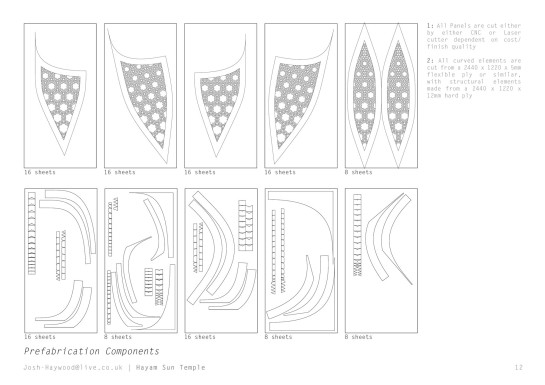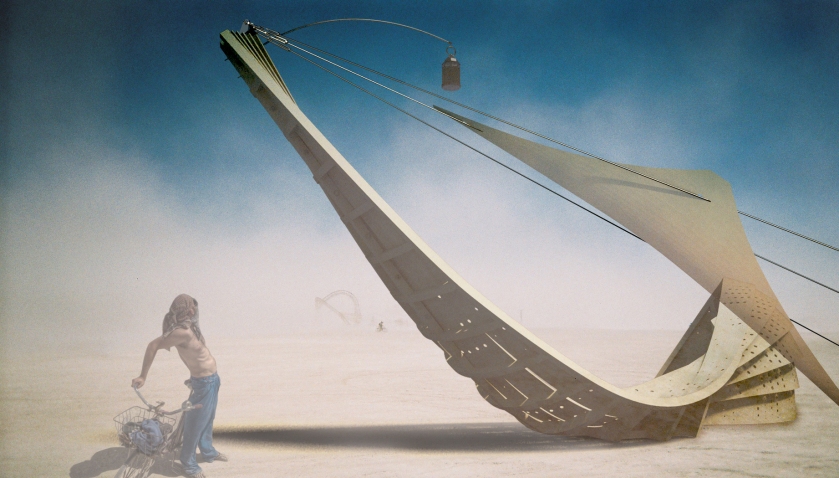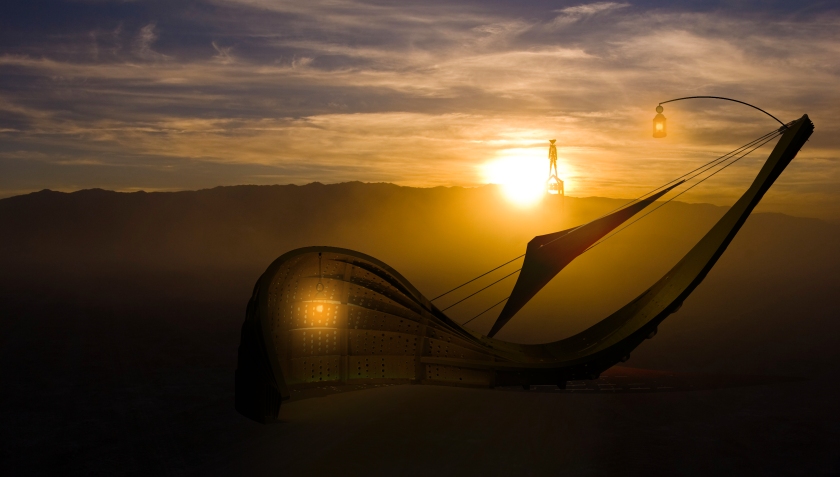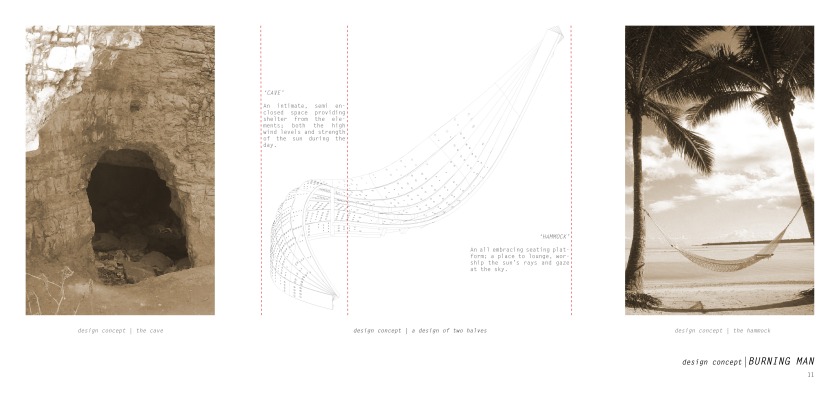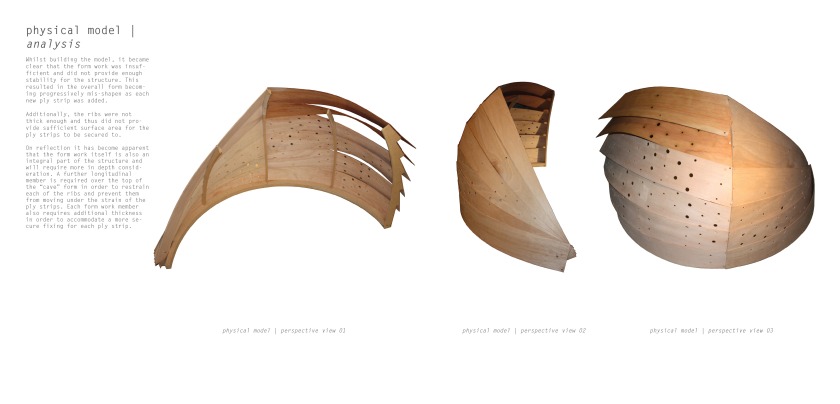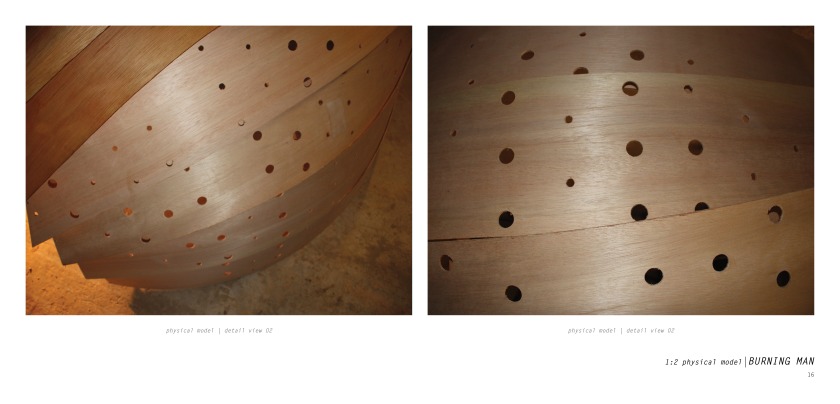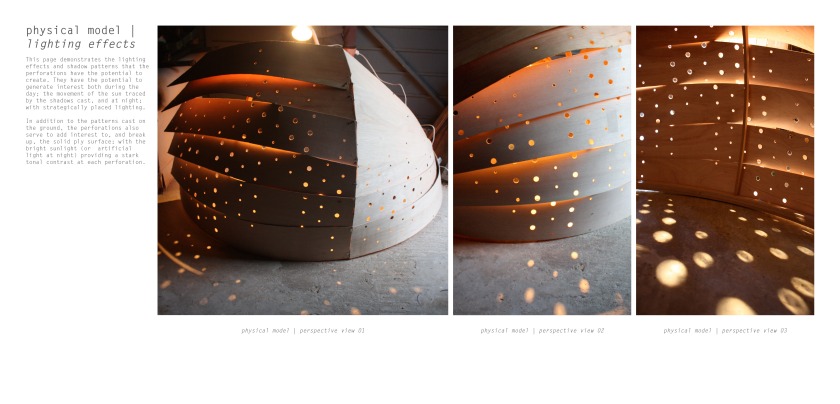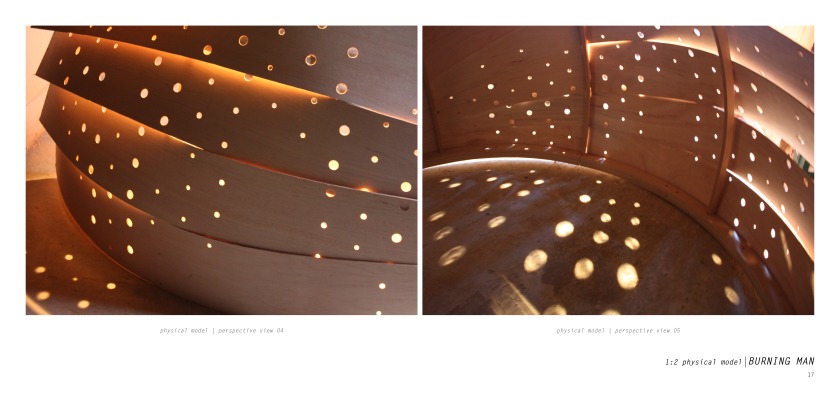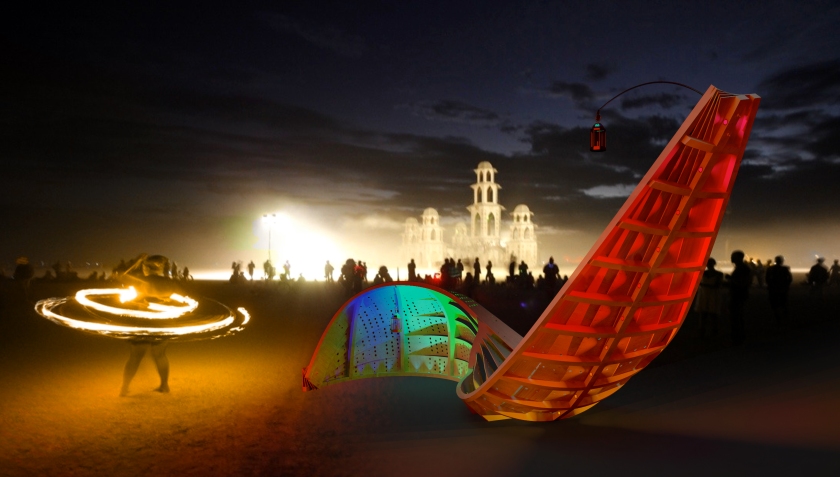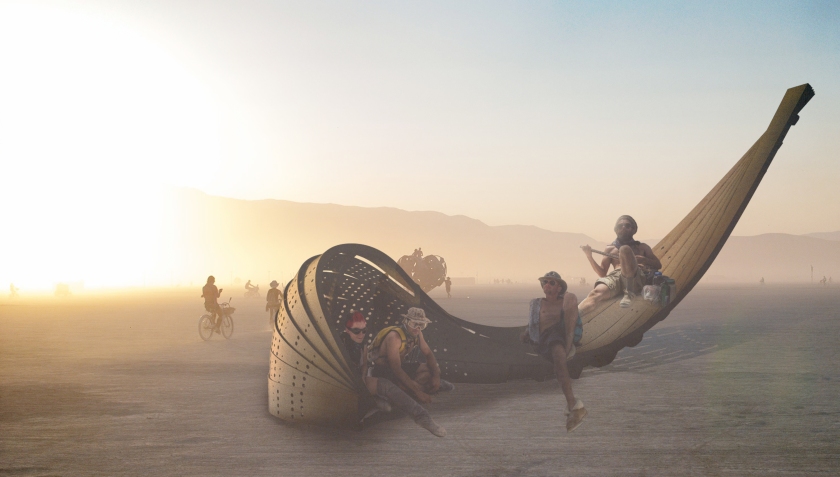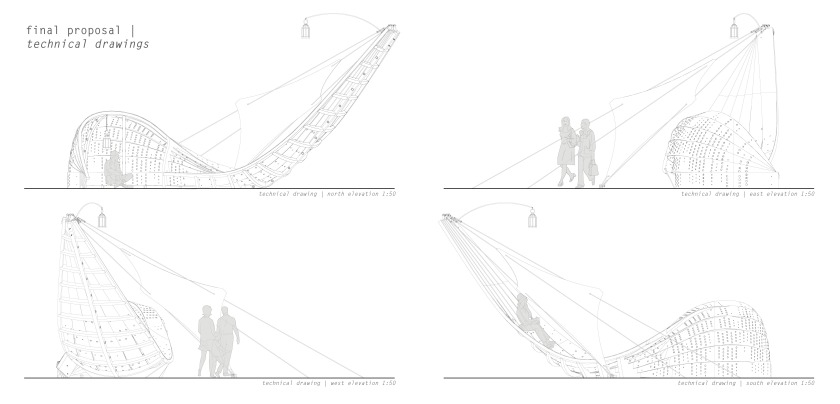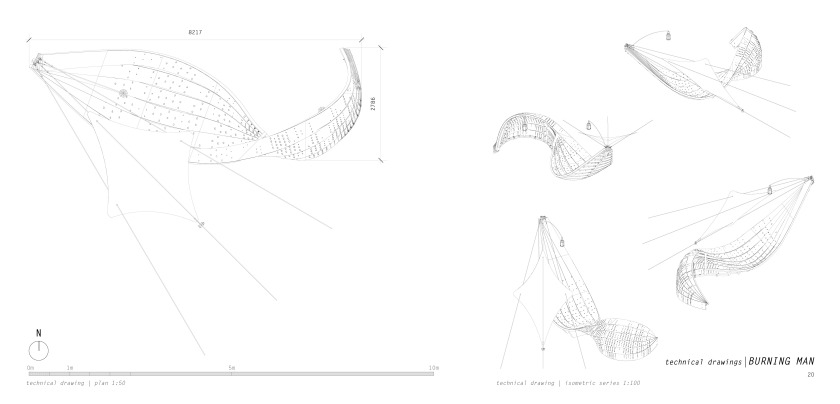The Hayam embodies the spirit of Islamic geometry: intricately interwoven patterns and repeating themes that speak of infinity. Geometry is the language of the universe; in the very small the infinite can be found.
Physical Description | Erupting flowers of perforated plywood seamlessly joined together to form a beautiful curvilinear structure. Reminiscent of muqarnas and moucharaby but stripped back to the pure essential fretwork and form, leaving behind only what is necessary. Enamels, glazes and precious metals are replaced by the gold of scattered light filtering through the delicate tracery of the screen, elevating the spirit. The treasures are not material things; they are spiritual. A place of illumination, intended for contemplation.
Emerging from a study into the geometry of Islamic art the pavilion references motifs and arabesques traditionally found in mosques and other sacred places though in itself the Hayam has ties to no religion; it transcends time and space, language and culture.
Interactivity | The structure provides a refuge from the heat of the sun and an intimate spiritual place for people to gather and rest. During the night the four pillars illuminate like a giant lantern with gas fires and the flames can be seen dancing behind the filigree patterns. The gas fires heat the area during the cold night so the space continues to function as a comfortable retreat.
More Info: http://issuu.com/josh-haywood/docs/jh_burning_man_submission



